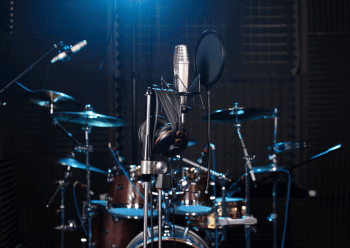3 Tips to Make Virtual Drums Sound Better

A majority of the music produced today is made using computers and MIDI sequencing software like Logic Pro, Ableton, Digital Performer and Cubase. The possibilities provided by these programs are quite extensive, except one of the common problems is that the music can sound like it came from a computer.
Even the best drummers in the world play while keeping time with a slight inflection. And while their performance may sound tight, there’s an unmistakable human element to it that can be missing when every note has been quantized to line up perfectly with the MIDI grid.
Fortunately you don’t have to be a great drummer to get more human sounding drum tracks. Here are three tips that can help you perform your drum samples while still maintaining the accuracy and groove of a quantized track.
Slow It Down
When you lay down a percussion instrument, don’t record it at the actual tempo of the track. Slow it down enough that you have no trouble keeping up with the beat. Then when you’re finished recording, change the tempo back to the original speed and you’ll be surprised at how ‘tight’ your performance now sounds.
Only Quantize the Snare
If you’re in 4/4 time (which most music these days is), then your snare hit is often the most important element in the drum track. If it hits a fraction too late, the music feels like it drags. If it’s slightly early, the groove feels rushed. That’s why it’s important to make sure your snare hit is right in the pocket. If you need to use quantization to make sure it’s in time, go ahead. But, don’t quantize any of the other elements or it will start to sound too manufactured.
Mix In an Acoustic Element
Perhaps the best trick to make your drum samples sound more realistic is to combine them with a recorded percussive track. A live recorded hi-hat or tambourine can go a long way to make it sound like you tracked a whole drum set. Also the combination of a live element with a completely inorganic drum machine element can make your percussion track even more interesting. (Radiohead does this from time to time.)
Just because you’re a not a drummer doesn’t mean your music has to always sound like it was made using a sequencer. By slowing down your tracking tempo, using less quantization and interspersing your percussion tracks with live recordings, you can create much better and more convincing sounding drum tracks, even if it’s mostly samples.




